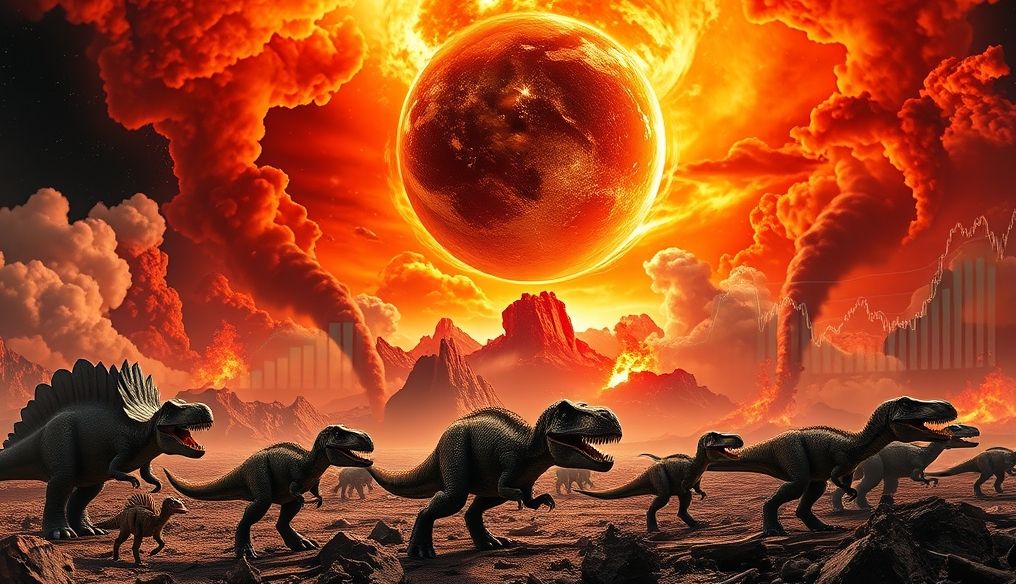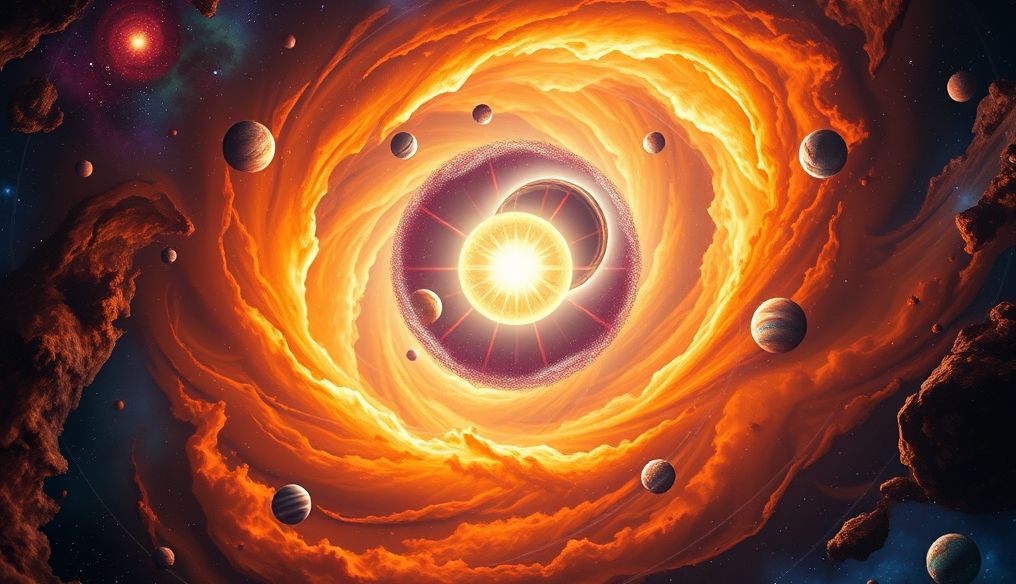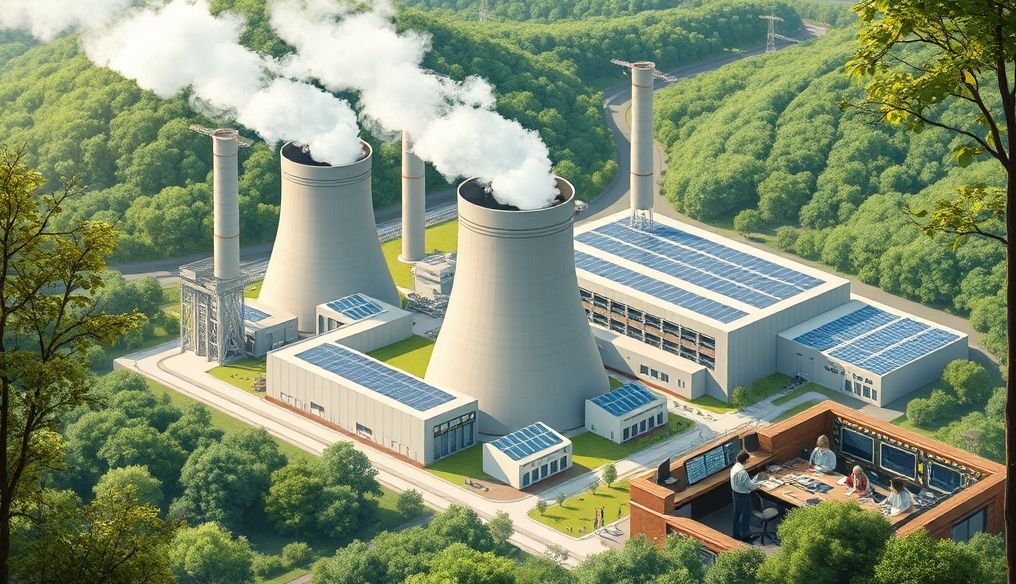Did an Asteroid Alone Cause the Extinction of the Dinosaurs? A Deeper Look at the End of the Dinosaur Era
The end of the dinosaur era, about 66 million years ago, has always been a mystery that intrigues scientists and the general public alike. The common story is that a massive asteroid struck the Earth, triggering a series of catastrophic events that wiped out most life forms, including the dinosaurs. But is this the whole story? Was the asteroid the sole cause of the dinosaur extinction, or were there other factors that contributed to this catastrophic event? In this article, we will delve into the scientific evidence and explore other potential factors that may have played a role in the extinction of the dinosaurs.
Chapter 1: The Asteroid Theory: Supporting Evidence
The asteroid theory is the most widely accepted, and for good reason:
Discovery of the Chicxulub Crater
In the Yucatan Peninsula of Mexico, a massive crater buried underground was discovered, known as the Chicxulub crater. This crater is about 180 kilometers in diameter and is believed to have formed as a result of a massive asteroid impact with Earth 66 million years ago. This timing coincides perfectly with the time of the dinosaur extinction.
Presence of the Iridium Layer
Iridium is a very rare element in the Earth's crust, but it is more common in meteorites. Worldwide, a thin layer of iridium-rich rock has been found in Earth's layers dating back to the end of the Cretaceous period, the time when the dinosaurs went extinct. This suggests that a large amount of iridium was spread around the world at once, which is consistent with an asteroid impact.
Global Tsunami
Geological evidence suggests that the Chicxulub asteroid impact caused a massive global tsunami. Tsunami deposits have been found in locations far from the impact site, suggesting that huge waves swept the world's coasts.
Chapter 2: The Catastrophic Effects of the Asteroid Impact
If the asteroid was the main cause of the dinosaur extinction, what were the catastrophic effects that led to this mass extinction?
Massive Wildfires
It is believed that the asteroid impact caused massive wildfires that swept through vast areas of forests and vegetation. These fires released huge amounts of smoke and ash into the atmosphere, blocking sunlight and lowering the Earth's temperature.
Impact Winter
The smoke and ash released into the atmosphere blocked sunlight for a long time, leading to what is known as "impact winter." The Earth's temperature dropped significantly, and photosynthesis in plants stopped, leading to the collapse of food chains.
Acid Rain
The asteroid impact released large amounts of sulfur and nitrogen oxides into the atmosphere. These oxides reacted with water to form acid rain, polluting the seas, oceans, and land.
Chapter 3: Other Potential Factors: Volcanic Activity
Although the asteroid theory is the most accepted, some scientists believe that other factors may have contributed to the extinction of the dinosaurs. One such factor is intense volcanic activity.
The Deccan Traps
In India, there is a vast area of volcanic rock known as the Deccan Traps. These traps were formed as a result of massive volcanic eruptions that lasted for hundreds of thousands of years, peaking at the same time the dinosaurs went extinct. Some scientists believe that these volcanic eruptions released huge amounts of greenhouse gases into the atmosphere, leading to significant climate changes.
The Effect of Greenhouse Gases
The greenhouse gases emitted by volcanoes led to an increase in the Earth's temperature, leading to the melting of ice and rising sea levels. These climate changes may have led to the deterioration of the environment in which the dinosaurs lived, making them more vulnerable to extinction.
Chapter 4: Other Potential Factors: Changes in Sea Level
In addition to volcanic activity, changes in sea level may have contributed to the extinction of the dinosaurs.
Retreat of Inland Seas
During the Cretaceous period, there were shallow inland seas covering vast areas of the continents. At the end of the Cretaceous period, these seas retreated, leading to the loss of coastal habitats and regional climate change.
The Impact of Habitat Loss
The loss of coastal habitats led to a reduction in biodiversity and deterioration of ecosystems. This made dinosaurs and other organisms more vulnerable to extinction.
Chapter 5: Other Potential Factors: Climate Change
Natural climate changes may also have played a role in the extinction of the dinosaurs.
Global Cooling
Although volcanic activity led to an increase in the Earth's temperature in the short term, there is evidence that the Earth was heading towards a period of global cooling at the end of the Cretaceous period. This cooling may have led to changes in vegetation cover and animal distribution, affecting the survival of the dinosaurs.
The Impact of Cooling on Dinosaurs
Dinosaurs, like other reptiles, relied on the external environment to regulate their body temperature. The drop in temperature may have made it difficult for dinosaurs to maintain a proper body temperature, leading to weakness and death.
Chapter 6: The Interaction Between Different Factors
It is likely that the extinction of the dinosaurs was not the result of a single factor, but rather the result of a complex interaction between several different factors. The asteroid may have been the spark that ignited a series of catastrophic events, but other factors, such as volcanic activity, changes in sea level, and climate change, may have made the dinosaurs more vulnerable to extinction.
Chapter 7: New Evidence and Recent Discoveries
Scientific research continues to reveal more evidence about the extinction of the dinosaurs. Recent discoveries provide new insights into the factors that may have played a role in this catastrophic event.
Sediment Analysis
Analysis of sediments in different locations around the world provides valuable information about the environmental conditions that prevailed at the end of the Cretaceous period. This analysis helps scientists understand the impact of the asteroid, volcanic activity, and climate change on ecosystems.
Fossil Study
Studying fossils helps scientists understand how dinosaurs and other organisms responded to environmental changes. This helps to identify the factors that may have made some organisms more vulnerable to extinction than others.
Chapter 8: Lessons from the Extinction of the Dinosaurs
The extinction of the dinosaurs is a powerful reminder that life on Earth can be fragile and susceptible to catastrophic changes. By studying the extinction of the dinosaurs, we can learn valuable lessons about how to protect biodiversity and preserve the environment.
The Importance of Biodiversity
Biodiversity makes ecosystems more resilient and able to adapt to environmental changes. The loss of biodiversity makes ecosystems more vulnerable to collapse.
Environmental Conservation
By reducing pollution and conserving natural resources, we can protect the environment and reduce the risk of mass extinction.
Conclusion
Although the asteroid played a significant role in the extinction of the dinosaurs, it is not the only cause. Volcanic activity, changes in sea level, and climate change may have also contributed to this catastrophic event. By understanding the different factors that led to the extinction of the dinosaurs, we can learn valuable lessons about how to protect biodiversity and preserve the environment.




